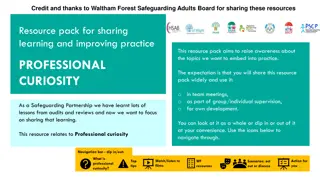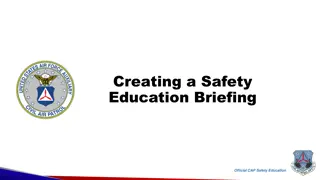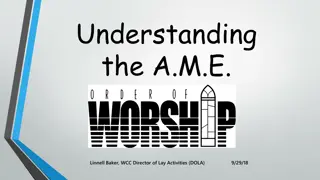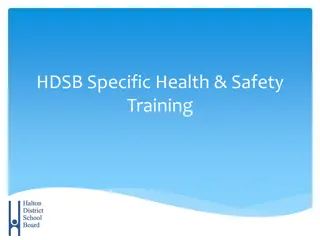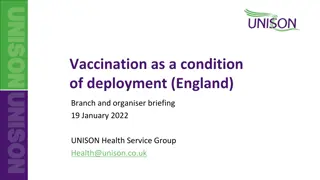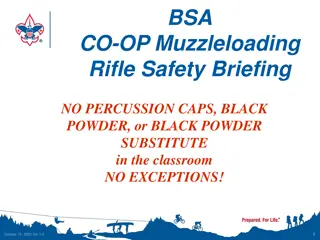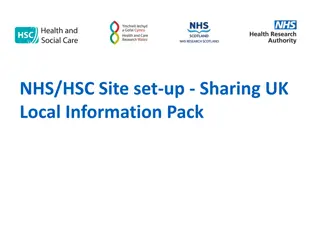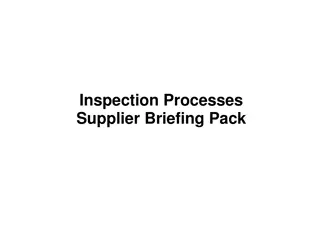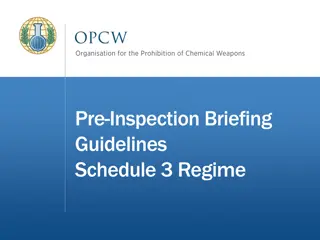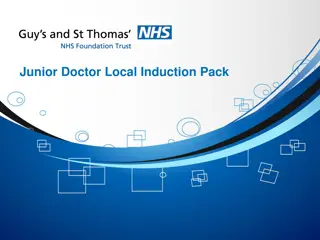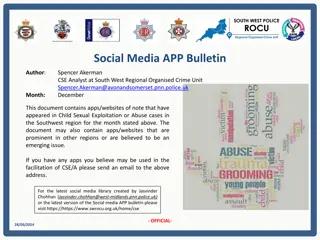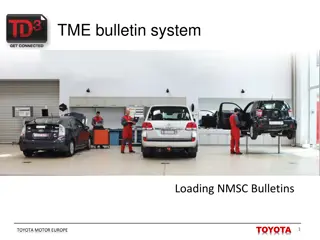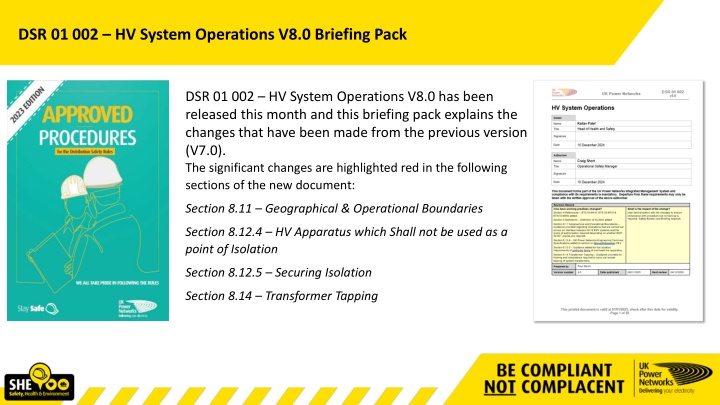
HV System Operations V8.0 Changes Briefing Pack
"Explore the significant changes in DSR.01.002.HV System Operations V8.0 from the previous version, including updates on geographical boundaries, HV apparatus usage, securing isolation, and transformer tapping. Learn about operational guidance, authorizations, and equipment scenarios at HV/EHV interfaces. Gain insights into operational boundaries, authorizations, and restrictions for different levels of personnel within the high-voltage system."
Download Presentation

Please find below an Image/Link to download the presentation.
The content on the website is provided AS IS for your information and personal use only. It may not be sold, licensed, or shared on other websites without obtaining consent from the author. If you encounter any issues during the download, it is possible that the publisher has removed the file from their server.
You are allowed to download the files provided on this website for personal or commercial use, subject to the condition that they are used lawfully. All files are the property of their respective owners.
The content on the website is provided AS IS for your information and personal use only. It may not be sold, licensed, or shared on other websites without obtaining consent from the author.
E N D
Presentation Transcript
DSR 01 002 HV System Operations V8.0 Briefing Pack DSR 01 002 HV System Operations V8.0 has been released this month and this briefing pack explains the changes that have been made from the previous version (V7.0). The significant changes are highlighted red in the following sections of the new document: Section 8.11 Geographical & Operational Boundaries Section 8.12.4 HV Apparatus which Shall not be used as a point of Isolation Section 8.12.5 Securing Isolation Section 8.14 Transformer Tapping
DSR 01 002 HV System Operations V8.0 Briefing Pack Section 8.11 Geographical and Operational Boundaries Paragraphs 3 to 7 and Table 1 have been added to this section. These paragraphs and the table provide guidance on operations carried out across an interface between HV and EHV systems. They detail the levels of authorisation required depending on whether NOP 50 001 - Pre and Post Outage Checks for EHV Networks are necessary.
We've included several scenarios on the next slide to provide guidance on Authorisations and equipment.
DSR 01 002 HV System Operations V8.0 Briefing Pack Section 8.11 Geographical and Operational Boundaries cont. Scenarios of Possible Operations at an Interface Between HV/EHV Systems: 1. I hold an 11kV Authorisation as per Table 1, but I have not had NOP 50 001 training. What can I operate? o As an 11kV Authorised Person as per table 1, without NOP 50 001 training, you can only operate 11kV bus-couplers, bus-sections, or transformer circuit breakers under the control of the 33kV/132kV control desk where telecontrol has failed (or does not exist). You can carry out open or close operations. When closing to energise, ensure there are no SCADA alarms indicating a fault at the site where the equipment is to be operated. You are not allowed to complete these operations for planned works where NOP 50 001 checks would be required. Isolation and earthing operations are not permitted. 2. I hold an 11kV Authorisation as per Table 1, but I have not had NOP 50 001 training, and I have been sent to a loss of a primary site where the transformer breakers are open. What can I operate? o If it is established that a slow-opening feeder breaker or non-operating feeder breaker has caused the loss of the site, as an 11kV Authorised Person as per table 1 you can close the 11kV transformer breaker(s) under the control of the 33kV/132kV control desk. You need to ensure there are no SCADA alarms indicating a fault at the site where the equipment is to be operated, and that you have checked the switch room for any signs of damage or distress once the relevant feeder breaker has been opened to avoid closing back onto a fault. 3. I am a 33kV AP/SAP who has been asked to assist with a Planned 66kV or 132kV outage. o As a 33kV AP/SAP, you cannot operate the secondary side bus-couplers, bus sections, and transformer circuit breakers under the control of the 66/132kV control desk in pre-planned (NOP 50 001) situations unless you hold the specific authorisation Authorised Person Undertake Operation of TX CB & Associated Apparatus. This authorisation allows you to operate, isolate, and earth secondary Transformer, Bus Bar or Bus Coupler CBs, VTs, etc., of EHV transformers without being authorised for the higher voltage side of these transformers. 4. I am a Primary Network 33/66/132kV AP/SAP who has been asked to carry out operations on the 11kV secondary network feeder breakers at a grid/primary site. o As a Primary Network 33/66/132kV AP/SAP, you cannot operate any 11kV secondary network feeder circuit breakers unless you hold the required authorisation to operate on the secondary 11kV network.
DSR 01 002 HV System Operations V8.0 Briefing Pack Section 8.12.4 HV Apparatus which Shall not be used as a Point of Isolation Clarification has been given on the Engineering Technical Specification for using non-withdrawable circuit breakers as isolation points when they are simply in the open position. Previously, only Brush Falcon and Yorkshire Ringmaster were mentioned as examples. However, the network now includes other types, and the changes reflect this. Section 8.12.5 Securing Isolation Guidance has been issued on the procedure for securing isolation on different types of overhead apparatus within our network. This process is consistent with current technical training instructions and is already widely practiced in SPN. It involves securing the manual trip/close inhibit lever to prevent the operation of HV links live if the recloser closes remotely.
DSR 01 002 HV System Operations V8.0 Briefing Pack Section 8.14 Transformer Tapping A second paragraph has been added to this section to clarify that remote tapping on-site of an on-load tap changer shall only be performed by trained and competent staff. If you require any further information on these changes then please contact a member of the Operational Safety Team.



